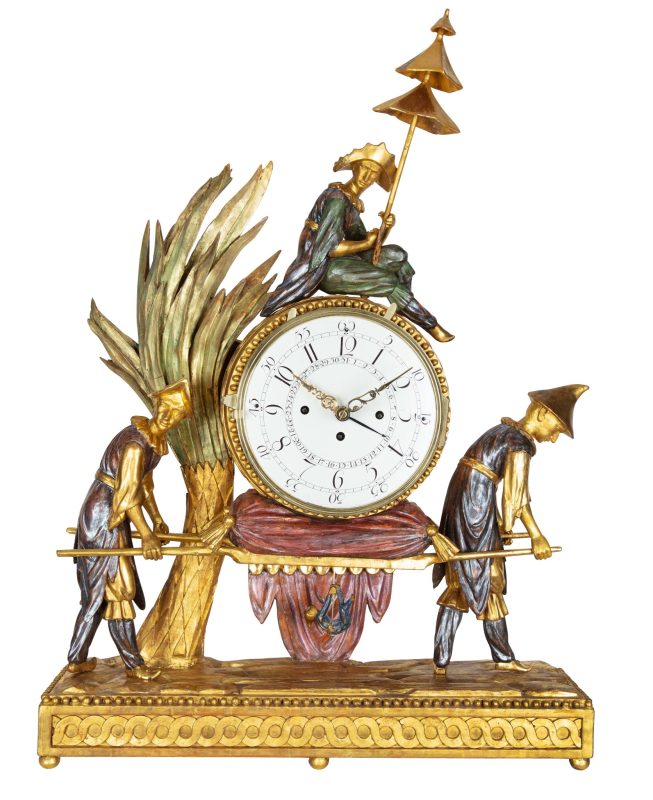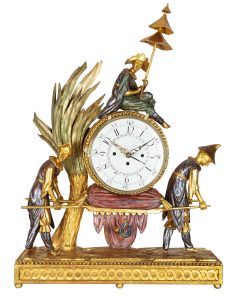Vienna, end of the 18th century
- Case
- carved and gilt lime wood, glazes on silver leaf, three grand finely carved chinoiserie figures with a palanquin, pendulum bob carved in the shape of an acrobat
- Dial
- enamel
- Movement
- verge escapement, Viennese grande sonnerie on bells, reversing lever for petite sonnerie, repeater, turn-off for strike, indication of date
- Height
- 31 in
This mantel clock ”au chinois“ is an early example of Viennese sculptural clocks and captivates with its rich figural decoration, wonderful colorful glazes on silver leaf as well as its generous dimensions. On a base with wickerwork frieze and a top designed as a rocky surface are two servants in Asiatic dress. They carry a padded palanquin on which rests the cylindrical movement case with the enamel dial. Another figurine in Chineseinspired costume with a parasol serves as a finial. A palm tree adds depth to the scene and also acts as a support for the mechanism case. The carved fabric drapery below the case provides a fitting background for the unusual pendulum. In fact, instead of a classic pendulum bob, this is where you can see a special feature: a small figure made of carved and painted lime wood in the form of an acrobat swinging on a trapeze, also dressed ”au chinois“.
Cases in the form of a sedan chair with porters became widespread in European clockmaking towards the end of the 18th century through the designs of outstanding Parisian bronziers such as Pierre-Philippe Thomire or Jean-Simon Deverberie. However, the figures of the porters tend to be fanciful representations of Africans or Native Americans. Asian-looking carriers are known to us only from this Viennese type. So-called ”chinoiseries“ (motifs inspired by Far Eastern art and culture) had become fashionable in Austria primarily through Maria Theresa‘s ”Chinese cabinets“ at Schönbrunn Palace.
The design of clothing and headdresses, mixing elements of Central Asian and Far Eastern costumes, is an extremely loose interpretation of Asian fashion. This extraordinary carving reveals more about the European conceptions of Far Eastern lifestyles than about the actual Asia of the 18th century. This continent rich in goods, full of lush vegetation, characterized by exotic customs and traditions and home to an overwhelming diversity of cultures was almost incomprehensible for the European observer of that time, which made it all the more fascinating.

